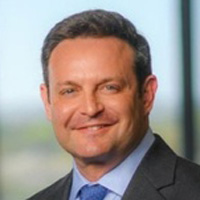Pay the Taxes You Owe and Not a Cent More
Stressing about the taxes you’ll pay in retirement? Here are some ways to help reduce your tax liability when you retire, including managing RMDs.

It’s not exactly a secret that the United States government has a spending problem. The national debt is at $31.5 trillion and counting, and at some point, the bill is going to come due. One possible scenario, of course, would be a massive increase in taxes.
Already, one tax increase is on the horizon. Unless something changes between now and then, the 2017 tax cuts are set to expire at the end of 2025.
This dark cloud of taxes hovering over the future can be especially troubling for retirees, many of whom already worry about making sure their savings last the rest of their lives. Fortunately, options exist to help reduce your tax liability in retirement. Here are a few strategies to consider now.

Sign up for Kiplinger’s Free E-Newsletters
Profit and prosper with the best of expert advice on investing, taxes, retirement, personal finance and more - straight to your e-mail.
Profit and prosper with the best of expert advice - straight to your e-mail.
Roth conversions
Converting traditional IRA and 401(k) accounts to Roth accounts has become a popular way to reduce the amount of taxes you will pay in retirement. Many Americans have their retirement savings in tax-deferred accounts, such as those traditional IRAs or 401(k)s. This means that the money they contributed to those accounts was not taxed. But the tax bill is coming due when they retire and begin making withdrawals.
Also, starting at age 73, people holding those accounts are subject to required minimum distributions (RMDs). That means they must withdraw a certain percentage each year and pay taxes on the withdrawal, even if they don’t need the money. (The RMD age has changed. More on that in a moment.)
Roth IRAs don’t have an RMD. That’s because they are not tax-deferred accounts. Instead, you pay taxes on the money at the time of contribution. After that, the accounts grow tax-free, and you aren’t taxed when you make withdrawals in retirement.
This is why it can be a smart move to begin now to shift your money from tax-deferred accounts to Roth accounts. You pay taxes when you make the Roth conversions, but the money then grows tax-free, and you won’t have to worry about those RMDs.
Just make sure you do it the right way. You don’t want to shift all your money all at once because you can push yourself into a higher tax bracket and end up with a hefty tax bill.
Also, if you are on Medicare Part B or Part D, you could trigger an increase in your premium. It’s best to stretch the conversion over several years. A financial professional should be able to help you determine the best strategy for you.
Qualified charitable distributions
The qualified charitable distribution, or QCD, is another way to avoid paying RMDs. This is especially advantageous for people who don’t need their IRA money and would like to give to a favorite charity. If you set up a QCD, you can send your withdrawal directly to that charity, and there is no tax on it.
You just need to make sure that you set things up for a direct transfer from your IRA to the QCD. If the money goes to you first and then you make the contribution to the QCD, the withdrawal is still taxed. A few other things to know: You must be age 70½ or older to set up a QCD; an IRA is eligible, but a 401(k) is not; and individuals can contribute up to $100,000 annually.
A donor-advised fund
Over the years, the standard deduction on the 1040 form has risen so high ($27,700 for a married couple filing jointly in 2023) that most people no longer itemize deductions. This means charitable donations don’t have the tax advantage they once did. But in some cases, a donor-advised fund can help.
This is an account established where you place donations to be distributed to a favored charity. Your donation is immediately tax deductible, but the money can be paid out to the charity over years, gaining interest in the meantime.
How does this help you outpace the standard deduction? As just one example, let’s say that you donate $10,000 to your church each year. You could donate $30,000 to the donor-advised fund in one year and claim the tax deduction, but the church would be paid the money over time.
Age for taking RMDs has changed
As mentioned earlier, the age you must begin taking RMDs has been 72, but there are new RMD rules. Starting this year, the RMD age is raised to 73. Then, starting on Jan. 1, 2033, it will go up to 75.
That might sound good, allowing you to delay the RMDs longer, but it has its own pitfalls. RMDs are calculated based on a percentage of the money in the account. That extra time delaying the RMD could mean you will have an even larger balance, meaning the RMD will be larger and the amount of taxes owed greater. That’s one more reason to consider converting to a Roth.
One important thing to remember about taxes is that, too often, people fail to think about them until it’s filing time in April, and they check in with a CPA. At that point, it’s too late to do much to help lower your tax bill from the previous year. Dec. 31 is the real tax deadline — not April 15.
CPAs do great work and will help make sure you are in compliance with the laws and that you take advantage of any tax credits or deductions you are due. But their focus is tax preparation, not tax planning. In other words, if you didn’t already make moves with your Roth, set up that QCD, establish a donor-advised fund or take other steps aimed at minimizing your taxes, your CPA’s hands (and calculator) will be tied.
This is why it doesn’t hurt to have a tax team on your side. In addition to your CPA, you should have a financial professional who understands how to navigate the tax rules to position your money in the most advantageous manner.
The desired result: You will pay what the laws require — but not a penny more.
Ronnie Blair contributed to this article.
The appearances in Kiplinger were obtained through a PR program. The columnist received assistance from a public relations firm in preparing this piece for submission to Kiplinger.com. Kiplinger was not compensated in any way.
Get Kiplinger Today newsletter — free
Profit and prosper with the best of Kiplinger's advice on investing, taxes, retirement, personal finance and much more. Delivered daily. Enter your email in the box and click Sign Me Up.

Steve Meeks is the president and founder of Interlinc Financial, where he helps clients protect their wealth and lifestyles. With decades of experience, Meeks uses an educational approach to ensure clients have the knowledge to make informed, productive choices. He is a tactical and strategic thinker — skills he developed as a U.S. Navy tactical strategist specializing in warfare and search and rescue. Steve Meeks has passed the 65 Securities exam and has a life insurance license.
-
 In Trump’s Economy Should 401(k) Savers 'Set It and Forget It?'
In Trump’s Economy Should 401(k) Savers 'Set It and Forget It?'It’s hard to bury your head in the sand when the markets are volatile. Here’s when it makes sense and when it doesn’t.
By Donna Fuscaldo
-
 Ten Cheapest Places To Live in Florida
Ten Cheapest Places To Live in FloridaProperty Tax Make your Florida vacation spot daily living — these counties have the lowest property tax bills in the state.
By Kate Schubel
-
 Bouncing Back: New Tunes for Millennials Trying to Make It
Bouncing Back: New Tunes for Millennials Trying to Make ItAdele's mournful melodies kick off this generation's financial playlist, but with the right plan, Millennials can finish strong.
By Alvina Lo
-
 Early-Stage Startup Deals: How Do Convertible Notes Work?
Early-Stage Startup Deals: How Do Convertible Notes Work?Some angel investors support early startups by providing a loan in exchange for a convertible note, which includes annual interest and a maturity date.
By Murat Abdrakhmanov
-
 SRI Redefined: Going Beyond Socially Responsible Investing
SRI Redefined: Going Beyond Socially Responsible InvestingNow that climate change has progressed to a changed climate, sustainable investing needs to evolve to address new demands of resilience and innovation.
By Peter Krull, CSRIC®
-
 Here's When a Lack of Credit Card Debt Can Cause You Problems
Here's When a Lack of Credit Card Debt Can Cause You ProblemsUsually, getting a new credit card can be difficult if you have too much card debt, but this bank customer ran into an issue because he had no debt at all.
By H. Dennis Beaver, Esq.
-
 Going to College? How to Navigate the Financial Planning
Going to College? How to Navigate the Financial PlanningCollege decisions this year seem even more complex than usual, including determining whether a school is a 'financial fit.' Here's how to find your way.
By Chris Ebeling
-
 Financial Steps After a Loved One's Alzheimer's Diagnosis
Financial Steps After a Loved One's Alzheimer's DiagnosisIt's important to move fast on legal safeguards, estate planning and more while your loved one still has the capacity to make decisions.
By Thomas C. West, CLU®, ChFC®, AIF®
-
 How Soon Can You Walk Away After Selling Your Business?
How Soon Can You Walk Away After Selling Your Business?You may earn more money from the sale of your business if you stay to help with the transition to new management. The question is, do you need to?
By Evan T. Beach, CFP®, AWMA®
-
 Two Don'ts and Four Dos During Trump's Trade War
Two Don'ts and Four Dos During Trump's Trade WarThe financial rules have changed now that tariffs have disrupted the markets and created economic uncertainty. What can you do? (And what shouldn't you do?)
By Maggie Kulyk, CRPC®, CSRIC™